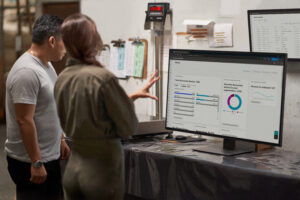King County, WA launches Smart Building Energy Tracking System
With cities and urban areas generating the bulk of global carbon emissions which contribute to climate change, it’s exciting to see a new project that’s kicking off right in our neighborhood – Washington’s King County is launching a two-year pilot project of the Smart Building Energy Tracking System, which uses new energy-tracking software that will reduce energy consumption and carbon emissions.
Using software developed by Microsoft partner Iconics and MacDonald Miller Facility Solutions, and based on Microsoft’s cloud and BI platforms, this pilot project will provide King County with real-time energy analytics at five locations to help operate buildings more efficiently, identify HVAC problems faster and more accurately, and better prioritize maintenance work. It will build upon the work that King County Executive Dow Constantine has done to confront climate change in the 13th-largest county in the United States.
In my role as Chief Environmental & Cities Strategist for Microsoft, I spend a lot of time talking with government officials and our partners across the world about the mounting pressures of population growth and resource depletion. It will be critical for all cities and governments to manage their natural resources more efficiently and bridge the disparate systems to optimize performance and value creation. Civic leaders want to grow the economy, but with urbanization and less resources, they recognize the need to increase efficiency. King County’s pilot project is a great example of this.
At Microsoft, we’ve been using the Smart Building Energy Tracking System for some time now, and we were happy to join Executive Constantine as co-hosts of a tour for mayors, councilmembers and energy and education representatives from the Puget Sound area at the Microsoft campus to demonstrate the project’s benefits more broadly. Guests will be able to see the system in action, and learn how it will help King County to not only reduce its carbon footprint, but to also increase savings for local taxpayers. Sounds like a pretty solid win-win to us.
We hope the results of this project inspire more governments to start thinking about how they can use technology to help tackle the serious environmental challenges that we face today and tomorrow.
Have a comment or opinion on this post or a question for the author? Please let us know on Twitter.




